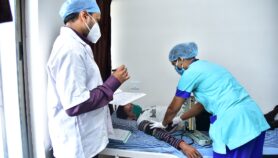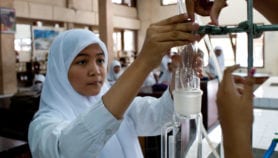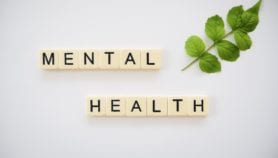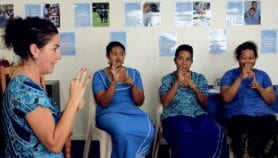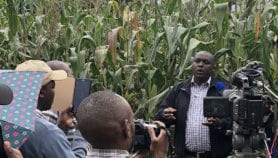By: Alex Abutu
Send to a friend
The details you provide on this page will not be used to send unsolicited email, and will not be sold to a 3rd party. See privacy policy.
As Japan’s nuclear accidents send shockwaves round the world, Alex Abutu explores whether Africa is ready to provide safe nuclear power.
[CAPE TOWN] The disasters that struck several Japanese nuclear facilities in the wake of last week’s devastating tsunami have highlighted concerns about whether developing nations can safely develop nuclear power facilities of their own.
If a highly developed nation, so well prepared for disasters, can end up in such an apparent nuclear mess, what hope do poorer, less well-organised countries have of preventing disasters at nuclear facilities?
This issue is currently exercising countries along the Pacific ‘ring of fire’, as well as India and its neighbours, but many African countries also aspire to become nuclear.
Speakers at Africa’s first conference on the contribution of nuclear energy to sustainable development, in 2007, called for there to be no restrictions on Africa’s use of peaceful nuclear technology.
But does the continent have the capacity and expertise to ensure the safety of nuclear power plants?
Lack of investment
In parts of Africa there has been criticism that there is absence of a culture of maintenance and a lack of engineers to maintain the existing infrastructure, even in non-nuclear electricity plants.
For example, most of Nigeria’s gas thermal plants and hydropower stations, built in the 1970s, were operating below capacity in 2006 because of a lack of government investment in maintenance, according to former president Olusegun Obasanjo, who was speaking at the inauguration of a power station in 2007.
Anne Starz, head of the integrated nuclear infrastructure group at the International Atomic Energy Agency (IAEA), says that many developing countries underestimate the investment in science, engineering and time required to commission a nuclear reactor. Between 200 and 1,000 scientists and engineers trained in nuclear science are needed to run a nuclear power plant, she says.
Yet fewer than 10,000 people work in Africa’s entire nuclear sector, says Rob Adam, chief executive of the South African Nuclear Energy Corporation.
Christopher Watson, nuclear expert and emeritus fellow of Merton College, at the University of Oxford, United Kingdom, says: "Many African countries would struggle to provide sufficient scientific and engineering manpower to run a civil nuclear programme, but that is a problem which many countries have faced — setting up the necessary training programmes takes time."
The IAEA offers guidelines and assistance to countries on their way to a nuclear future, he added, but they may need to wait for newer technologies before fully embracing nuclear energy.
Scientists have recently said that new, smaller and more flexible nuclear technologies could benefit nuclear energy programmes in developing countries.
"In Kenya, the overall size of the grid is 2,000 megawatts," Adam said at the African Science Academy Development Initiative conference late last year (10 November). "If you have a reactor that provides 1,600 megawatts and you take it down for maintenance, you take Kenya down. Ten to 100 megawatts is the right size [reactor for Africa]."
Several vendors of nuclear reactors are now looking to develop smaller reactors, he says.
Political stability
Apart from having access to skilled experts and smaller reactors, countries also need to have the stability and political strength for long-lasting research and technology collaborations and the exchange of expertise, says Starz.
"Before a country can even consider planning a nuclear reactor it has to set up an independent regulatory body that oversees the establishment and running of reactors and that monitors safety," she says.
So far, at least 28 African countries have such bodies, which form the Forum of Nuclear Regulatory Bodies in Africa.
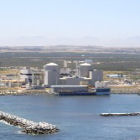
South Africa’s Koeberg is Africa’s only nuclear power plant
Bjorn Rudner/Eskom
Illustrating some of the safety issues that plague any nuclear ambitions, a radiation contamination at the Koeberg nuclear power station in South Africa affected almost 100 people last year (11–12 September) during maintenance work, although the levels were too low to cause harm, according to Eskom, the private company that operates it.
The South African Democratic Alliance party was among those that quickly blamed Eskom for not taking precautionary measures, although Eskom denied wrongdoing and said in a press release at the time that it "has assigned a technical team to review the incident and recommend steps to avoid a similar occurrence in future".
But the incident shows that even a country with a stable democracy, which meets all the IAEA’s guidelines for developing countries embarking on nuclear deployment, can still experience nuclear mishaps. IAEA helps its 90 member countries develop safe nuclear energy, but does not have the power to prevent a country from pursuing nuclear option.
Countries with unstable governments and ongoing conflicts may struggle to obtain a nuclear reactor anyway, according to Adam.
Sudan, a country ravaged by war, is aiming to have a power plant up and running by 2020. Last August, Mohammed Ahmed Hassan Eltayeb, head of the Sudan Atomic Energy Commission, announced plans to build Africa’s largest nuclear power plant.
But Sudan’s nuclear ambitions are not credible, Adam told SciDev.Net. "Nobody would sell a reactor to them."
African experience
There are ten research nuclear reactors in Africa — in Algeria, the Democratic Republic of Congo, Egypt, Ghana, Libya, Morocco, Nigeria and South Africa — but no new nuclear power plants are under construction at the moment, according to Adam.
Namibia, Niger and South Africa are all major producers of uranium and together account for around 15 per cent of the world’s known recoverable uranium resources, so getting nuclear fuel would not be a problem for them.
South Africa has been operating nuclear power stations since 1984 when Koeberg, its first nuclear plant, was connected to the national electricity grid. It is the continent’s only nuclear power station and has a capacity of 900 megawatts.
Bobby Godsell, a member of the South African National Planning Commission, said last year (27 September) at a public discussion in Johannesburg, South Africa, that half of the country’s new electricity capacity would be nuclear. He said the plan is to generate about 10,000 to 20,000 megawatts from nuclear sources.
In 2000, Nigeria, Africa’s second-biggest energy consumer, started introducing nuclear technology into the country’s troubled power-generation sector.
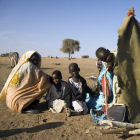


Could politically unstable Sudan be trusted with nuclear technology?
Flickr/United Nations Photo
It hopes to generate 1,000 megawatts from two proposed nuclear plants before 2019. But there are delays as a result of conflict between country’s two nuclear regulatory authorities.
The Nigerian Nuclear Regulatory Authority (NNRA) has been working on various regulatory issues to ensure that the country’s nuclear ambition has a solid foundation. But the new Nigeria Atomic Energy Commission — another governmental agency — has challenged the NNRA’s right to execute the nation’s nuclear plans, saying it has the mandate to do this and that the NNRA should only regulate it.
Growing interest
Kenya’s ambition to introduce nuclear technology started in 2008 when the country convened a national energy conference to enable local scientists to meet international experts with experience of establishing and managing nuclear power plants.
In September 2010, the country unveiled a nuclear power generation programme with the constitution of the Nuclear Electricity Programme Committee, headed by Ochillo Ayacko, the former energy minister.
Seed funding of 200 million Kenyan shillings (US$2.3 million) has been set aside for the proposal, which the government hopes will lead to a 1,000-megawatt power plant by the end of the decade, and the country has started technical meetings with the IAEA.
Tanzania passed a law allowing the use of nuclear power for electricity production back in 2009, and Algeria, Egypt, Morocco and Tunisia have all shown interest in using nuclear power.
"Africa is clearly a continent with a growing demand for electricity to meet its sustainable development goals," says Starz. "Countries in Africa expressing interest in nuclear power have different levels of existing experience with nuclear applications and will move at different paces. Not all are likely to achieve an operating nuclear plant in the next 20 years."
Some look to the Republic of Korea, which "may be an inspirational example of a country that started a nuclear power programme from a low level of development to become an exporter of nuclear technology to the United Arab Emirates," says Starz.
But if the Republic of Korea is an inspiration to Africa, one has only to look across the Sea of Japan for a different message.
Additional reporting by Linda Nordling.
Read all our coverage about the Japanese earthquake, tsunami and nuclear disaster here.
More on Capacity building
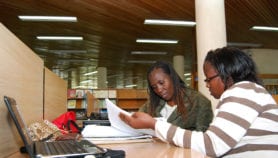

Script media release
Journalists offered ‘big break’ mentoring opportunity from Radio Nigeria
03/04/19








